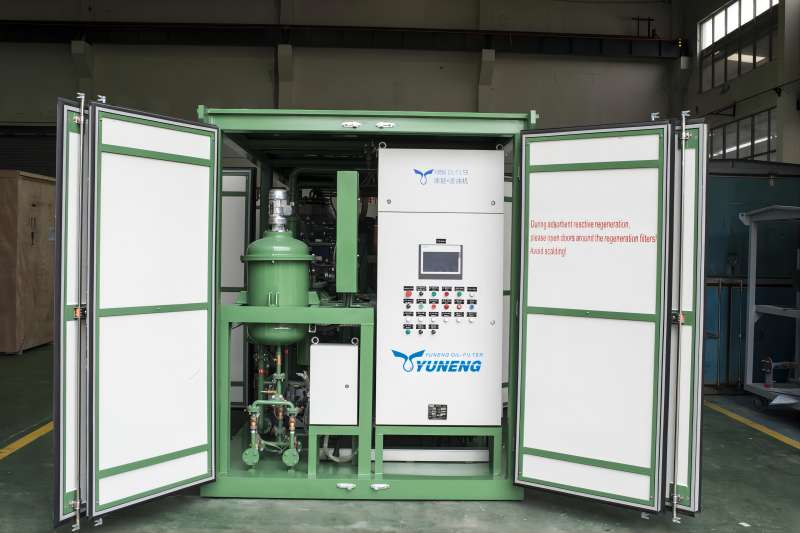Just How Regenerated Transformer Oil Expands Transformer Life Expectancy
The role of transformer oil is vital in guaranteeing the integrity and longevity of transformers, serving as both an insulator and coolant. Regrowed transformer oil uses an engaging option to boost these features by properly removing hazardous impurities that endanger efficiency.
Relevance of Transformer Oil
Transformer oil plays an essential function in the effective operation of electrical transformers. It mainly serves as an insulating medium, ensuring and preventing electrical discharges that components run safely under high voltage conditions. The oil's dielectric buildings are basic to keeping the stability of the transformer, as they lessen the danger of failings that might cause devastating occurrences or pricey downtimes.
In enhancement to its protecting capacities, transformer oil additionally functions as a coolant. As transformers operate, they produce warm that must be dissipated to avoid getting too hot and subsequent damage. The oil circulates within the transformer, moving and soaking up heat away from vital elements, consequently preserving optimal operating temperatures.
Furthermore, transformer oil serves as a barrier versus dampness and impurities, which can endanger the performance and longevity of the transformer. Its chemical homes help in reducing the effects of acids and other results that may form with time, adding to the overall wellness of the electrical system.
Benefits of Regenerated Oil

In addition, regenerated transformer oil has a lower level of impurities, including fragments and contaminants that can break down efficiency. This purity not just enhances the oil's thermal conductivity yet additionally extends the functional lifespan of transformers by minimizing overheating threats. The improved thermal security of regrowed oil guarantees consistent efficiency even under high operating temperatures, which is important for maintaining transformer performance.
One more advantage is its environmental effect. Regenerated oil promotes sustainability by decreasing waste and the requirement for brand-new oil manufacturing, therefore decreasing the carbon footprint connected with transformer upkeep. Reclaimed Transformer Oil. Additionally, the durability of regrowed oil translates to reduced maintenance expenses gradually, as less oil adjustments and much less constant equipment downtime are required.
Process of Oil Regeneration
The regrowth of transformer oil includes a systematic procedure designed to bring back the oil's original residential or commercial properties and improve its efficiency. This process commonly begins with the elimination of the used oil from the transformer, which is after that subjected to various filtration strategies.
The primary step in the regeneration process is the purification, where strong impurities such as dirt, steel, and sludge particles are eliminated. This is typically followed by vacuum cleaner distillation, which assists to get rid of wetness and volatile substances, consequently improving the oil's dielectric toughness.

Effect On Transformer Efficiency
Restoring the residential or commercial properties of regenerated transformer oil substantially influences the overall efficiency of transformers. Boosted dielectric strength is one of one of the most crucial advantages, as it allows for much better insulation and lowers the possibility of electric breakdown. This enhancement causes a more steady procedure under high voltage problems, ultimately causing increased effectiveness.
In addition, the elimination of impurities and destruction products throughout the regrowth procedure reduces the danger of getting too hot. Cleaner oil helps with far better warmth dissipation, which is vital for keeping optimum operating temperatures. As a repercussion, the thermal efficiency of the transformer is boosted, allowing for higher loads without jeopardizing integrity.
Moreover, the chemical stability of regenerated oil guarantees extended operational life. It withstands oxidation and destruction, lowering the regularity of upkeep treatments and oil substitute. This security not just adds to enhanced performance but also lines up with sustainability goals by reducing waste.
Future of Transformer Maintenance
As developments in innovation remain to reshape the landscape of electrical design, the future of transformer upkeep is poised for substantial transformation. The integration of wise modern technologies, such as IoT sensing units and predictive analytics, enables real-time tracking of transformer health and wellness, enhancing the ability to preemptively address issues before they escalate into major failings. This aggressive strategy not just makes best use of functional efficiency but also expands the life-span of transformers.
Additionally, the application of man-made intelligence (AI) in information evaluation enables for even more accurate fault discovery and diagnosis. By leveraging artificial intelligence formulas, upkeep groups can identify patterns in functional information that human experts may ignore, leading to more educated decision-making.
Additionally, the adoption of green methods, consisting of using regenerated transformer oil, is look what i found established to redefine maintenance procedures. This lasting approach not just decreases environmental influence but likewise boosts the overall health and wellness of the transformer.
Last but not least, the change towards automation in maintenance procedures is expected to improve procedures, reduce downtime, and lower expenses. As these technologies proceed to advance, the future of transformer maintenance will definitely come click here to find out more to be much more reliable, dependable, and lasting, guaranteeing the honesty of important electrical framework.
Conclusion
The application of regenerated transformer oil considerably enhances the operational long life of transformers. Inevitably, the fostering of restored oil stands for an essential innovation in transformer maintenance, ensuring optimal performance and sustainability in the management of electric facilities.
The function of transformer oil is vital in making certain the integrity and durability of transformers, serving as both an insulator and coolant.Transformer oil plays a crucial duty in the efficient operation of electric transformers. Regrowed oil promotes sustainability by reducing waste and the demand for new oil manufacturing, consequently decreasing the carbon impact connected with transformer maintenance.Restoring the residential or commercial properties of regenerated transformer oil significantly affects the overall efficiency of transformers.The utilization of regenerated transformer oil dramatically enhances the functional longevity of transformers.